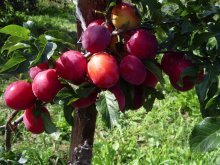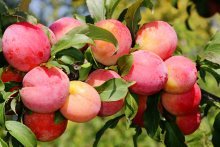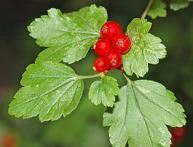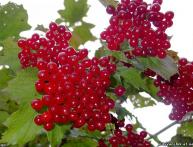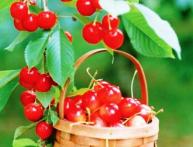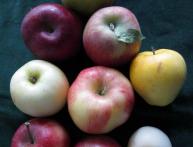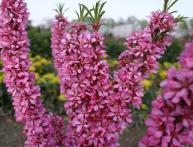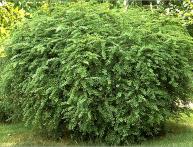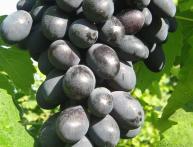Early Kabardian plum: recommendations for growing
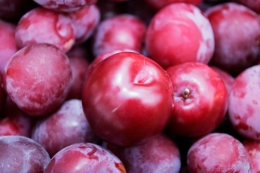
On the plots of most gardeners and gardeners you can find plum trees. The fruits of this tree have delicate pulp and a sweet taste. Variety plums Kabardinskaya grows well in regions with warm climates. It is quite simple to grow it; you must follow the rules of agricultural technology.
Content:
Description of the variety
Early Kabardian plum is an early ripening variety. It is characterized by low winter hardiness and is inferior to other varieties: Hungarian Donetskaya, Anna Shepet, Hungarian Italianskaya, etc. This variety is vigorous. The average height is about 6 meters. The crown of the tree is pyramidal, sparse and compressed. Its diameter is 2.5-3 meters. The shoots are densely located. The leaves are round with elongated tips.
Fruiting occurs in 4-5 years. The fruits of the Kabardian plum are regular, oval-shaped, weighing 30-40 g. Sometimes there are twin fruits, the weight of which reaches 70 g. The skin is dark purple in color, hard. The fruits may be covered with small gray spots or a grayish coating. Flowering begins at the end of April. The fruits ripen in July. They are characterized by high transportability.
Taste plums very pleasant with a slight sourness. The pulp is yellowish-green. In dry or cool weather, fruits lose their taste during ripening.The Kabardinskaya early plum variety is characterized by resistance to diseases such as hole spot and gray fruit rot.
One of the advantages of this variety is its self-pollinating ability, so there is no need to plant another tree nearby. It is advisable to grow the plant in regions with a warm climate, as severe frosts can affect fruiting.
Rules for growing plums

The plant should be placed in a sunny, well-lit place. Plum does not tolerate drafts. The soil should be fertile with good drainage. A week before landings it is necessary to prepare the soil mixture and hole. Its size should be approximately 70x70x70 cm. For the soil, you need to mix an earthen ball with peat, add wood ash, humus and fertilizers. Mix everything well and leave for a while.
When planting, the roots are carefully straightened into the hole and sprinkled with earth. It is important that the neck protrudes slightly from the ground. Next, fill the hole with the prepared soil mixture and compact it well. Then the seedling is watered and sprinkled with sawdust on top. Peat can be used as mulch. If necessary, place a support next to the trunk and tie a young tree to it.
Caring for plums involves timely, abundant watering, pruning and fertilizing. This plum variety loves moisture. Not only the quality of the crop, but also its quantity depends on the volume and quantity of watering.
During the flowering period, the tree needs abundant watering. After fruit set, watering is reduced. It is important to remember that excessive moisture will negatively affect the appearance. They will crack and lose their presentation.
To form a beautiful crown, it is necessary to perform pruning in a timely manner.This procedure is usually carried out at 3-4 years of age. During pruning, remove all weak and diseased shoots. Plums are propagated either by seeds or root shoots. To grow plums from seeds, you need to remove them from the ripe fruit. sunflower seed and place in a cloth soaked in water.
This procedure is performed in the fall. In this form it is placed in the refrigerator. It is necessary to ensure that the fabric does not dry out. In spring it is planted in a small pot. When the seedling gets stronger, it is transferred to open ground. When propagated by root shoots, the survival rate of the new tree is quite high. In mid-spring, the root part should be separated from the mother part and placed in a pre-prepared hole. With proper care, plum trees can bear tasty and aromatic fruits every year.
Benefits of Kabardian plum
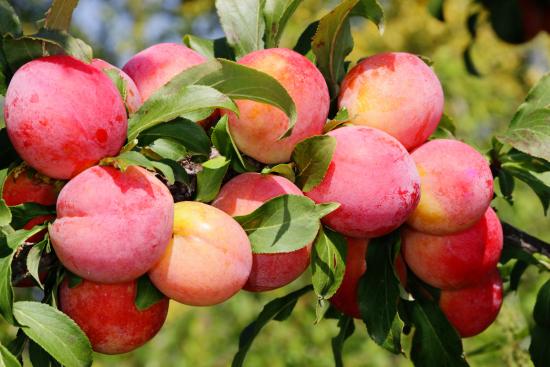
Fruits can be used for various purposes: eaten fresh, frozen, dried, canned. Plums are often used to prepare various compotes, jams, preserves or marmalade. The fruits contain glucose, fructose, sucrose, malic and citric acids, vitamin B1, R. Of the microelements, plums contain a large amount of potassium - 214 mg. Phosphorus, calcium, magnesium, manganese, zinc and other elements are also present.
Plum fruit contains coumarin. This is a substance that prevents the formation of blood clots. The fruits of the Kabardinskaya plum have a beneficial effect on intestinal motility and normalize metabolism. In addition, plum helps strengthen the immune system and the walls of blood vessels.
Fresh plums or in the form of jam have a mild laxative effect. Due to this property, it is used for constipation and heartburn.The fruits are useful for gout, atherosclerosis, and rheumatism. Plum leaves can be used for wounds, ulcers and ulcers.
An infusion prepared from plum flowers and leaves is used to treat bladder diseases and kidney inflammation. Eating plums in large quantities is not recommended for people with high stomach acidity. For gastritis and stomach ulcers, plums should be consumed with caution. Due to the high sugar content, it is not recommended for people with diabetes.
Video review of the Kabardinskaya early variety:

